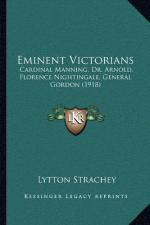|
This section contains 3,009 words (approx. 11 pages at 300 words per page) |

|
SOURCE: "Not Choosing Not To Be: Victorian Literary Responses to Suicide," in Literature and Medicine, Vol. 6, edited by D. Heyward Brock, The Johns Hopkins University Press, 1987, pp. 77-91.
In the following excerpt, Gates examines Nightingale's struggle with thoughts of suicide prompted by her early role as an idle, upper middle-class Victorian woman,
I have written elsewhere about Victorian medical opinion on suicide and about its relationship to English law and Victorian social and intellectual history.1 Briefly, throughout the Victorian era, suicide was illegal, considered "self-murder" by the courts; until 1870 the goods and chattels of a suicide were legally forfeited to the Crown. But by the 1830s, coroner's juries had begun heavily to utilize a loophole in the law: they found more and more suicides "temporarily insane," a verdict which negated forfeiture and thus saved already aggrieved families the further ignominy of poverty. There were a number of ramifications...
|
This section contains 3,009 words (approx. 11 pages at 300 words per page) |

|


